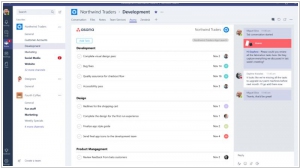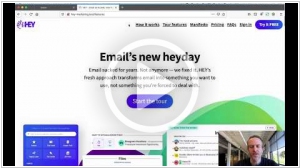Asana vs Basecamp
August 10, 2023 | Author: Adam Levine
12
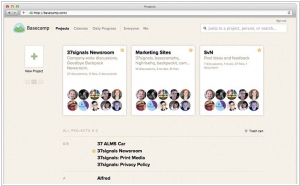
Basecamp tackles project management with a focus on communication and collaboration. Making to-do lists and adding to-do items literally just takes seconds. Basecamp is optimized to make the things you do most often really fast and really easy. Basecamp mobile is especially made for popular mobile devices like iPhone and Android.
Asana and Basecamp are both popular project management tools, but they differ in their approach to organizing and managing projects.
Asana is known for its robust feature set and flexibility, making it suitable for teams of all sizes. It offers a variety of project management tools, including task management, team collaboration, project tracking, and progress visualization. Asana provides a wide range of customization options, allowing users to adapt the tool to their preferred workflow and project management style. It also integrates with various third-party apps, enhancing its functionality and enabling seamless collaboration across different tools.
On the other hand, Basecamp takes a simpler and more streamlined approach to project management. It focuses on core features such as task lists, file sharing, team communication, and scheduling. Basecamp emphasizes a clean and intuitive interface, making it easy for team members to get started quickly and stay organized. It offers a centralized hub for project-related discussions and document management, promoting collaboration and transparency within the team.
See also: Top 10 Project Management software
Asana is known for its robust feature set and flexibility, making it suitable for teams of all sizes. It offers a variety of project management tools, including task management, team collaboration, project tracking, and progress visualization. Asana provides a wide range of customization options, allowing users to adapt the tool to their preferred workflow and project management style. It also integrates with various third-party apps, enhancing its functionality and enabling seamless collaboration across different tools.
On the other hand, Basecamp takes a simpler and more streamlined approach to project management. It focuses on core features such as task lists, file sharing, team communication, and scheduling. Basecamp emphasizes a clean and intuitive interface, making it easy for team members to get started quickly and stay organized. It offers a centralized hub for project-related discussions and document management, promoting collaboration and transparency within the team.
See also: Top 10 Project Management software
Asana vs Basecamp in our news:
2023. Asana launches new work intelligence tools with AI on the way
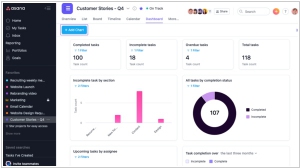
Asana has announced a new set of dashboards to give managers the data they need to make sure projects are staying on budget and meeting goals. This involves providing a single view of strategic initiatives, team capacity and budgets. It builds on the graph model that underlies the entire Asana platform, but the company is working to bring artificial intelligence to the process to make it even smarter. The next step will be using AI to generate the portfolios of the things that you care about instantaneously. So having them become smarter and smarter, but the fact that they can be at any level across an entire organization, that is part of this new launch
2020. Basecamp launches Hey, a hosted email service for neat freaks
Project management software maker Basecamp has introduced an innovative hosted email service named Hey. With Hey, the company aims to tackle the chaos and clutter typically associated with traditional email inboxes. One of its notable features is a built-in screener that prompts users to confirm whether they wish to receive emails from new senders. Upon consent, inbound emails are sorted into different trays. The central "imbox" (short for important box) exclusively contains communications designated as important by the user. Newsletters are organized in a News Feed-style tray called The Feed, where they are conveniently displayed in a partially opened format for casual reading. Additionally, email receipts are neatly arranged in a dedicated inbox view called the Paper Trail, serving as a reference for users.
2018. Work management software provider Asana gets $50M
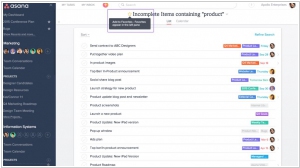
Asana, a platform utilized by teams and individuals to plan and monitor work projects, has secured an additional $50 million in funding, resulting in a valuation of $1.5 billion. The funding will be allocated towards international expansion and product enhancement. Asana has been actively focusing on global growth, with half of its new sales already originating from outside the United States. The company aims to further extend its product offerings while approaching profitability. As part of its expansion strategy, Asana plans to establish an AWS-based data center in Frankfurt within the first half of the upcoming year. Additionally, it intends to establish a stronger presence in the Asia-Pacific region, with new offices in Sydney and Tokyo, along with ongoing recruitment efforts in both markets. Asana's customer base spans across 195 countries and supports six languages. The company's decision to concentrate on these two regions stems from the significant traction it has observed in those areas.
2018. Asana launched $19.99 Business tier to help managers handle multiple projects
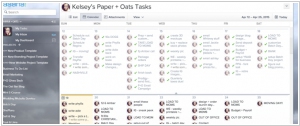
Project management service Asana is introducing a new tier called Asana Business, tailored for enterprises that handle multiple projects. Priced at $19.95 per user per month, this offering is specifically designed to support teams with managers or executives overseeing numerous projects simultaneously, which can sometimes reach thousands within a single organization. Asana Business provides additional features to aid designated individuals in effectively managing and prioritizing their workload. This emphasis on executives and managers aligns with Asana's broader vision of its role within the spectrum of productivity tools used by businesses. Alongside efficient storage solutions like Dropbox or Box and communication platforms such as Slack, Workplace, and Teams, Asana aims to establish its place as a comprehensive tool for enhancing organizational productivity.
2018. Basecamp adds recurring events and image galleries
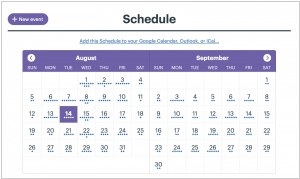
Project management service Basecamp has introduced several exciting new features. The first addition is Recurring events, allowing users to schedule daily, weekly, monthly, and yearly repeating events within Basecamp 3. Users can choose to set the recurrence until a specific date or continue indefinitely. The second feature is Image galleries, which enables users to showcase their work or share photos in visually appealing side-by-side or three-in-a-row layouts. This enhancement makes it easier than ever to present visual content. Lastly, Basecamp introduces Automatic Check-ins, a simple and informal tool extensively utilized for team communication. The entire company can engage in queries such as sharing weekend activities and work updates, while smaller teams like Support can address specific questions related to common issues encountered during the week. These new features enrich the Basecamp experience, enhancing collaboration and streamlining communication within teams.
2018. Basecamp improves client collaboration
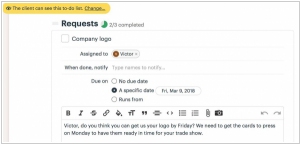
Collaborating with clients in Basecamp has been significantly enhanced, offering an improved experience. The latest updates enable you to effortlessly assign to-dos to clients, share files and folders, schedule events and meetings, engage in Campfire chats, and even automatically ask clients check-in questions. Within a project, all items are now clearly labeled as either "private to our team" or "visible to the client." To avoid any unexpected sharing mishaps and minimize concerns, every item within a project begins as private, accessible only to your team. When you post something new, you have the flexibility to specify whether it should be visible to the client or remain private within your team. These enhancements ensure smoother collaboration and allow for precise control over shared information in Basecamp.
2018. Asana adds AI-powered interactive project maps
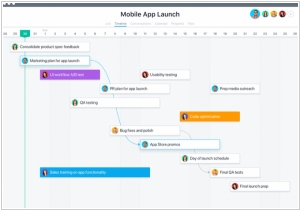
Workflow management platform Asana has introduced a new feature called Timeline, offering composite, visual, and interactive maps that illustrate the progress of various projects assigned to team members. This feature provides teams with a broader perspective on their collective workload and visualizes how projects interconnect in a timeline format. Timeline proves valuable in scenarios such as product launches, marketing campaigns, and event planning. Importantly, it does not require duplicating work or using separate software; instead, each project automatically becomes a distinct segment on the team's Timeline. It's worth noting that Timeline is exclusively available to paying users, while free users among Asana's extensive user base will need to upgrade to the premium tier to access this feature.
2018. Asana raised another $75M
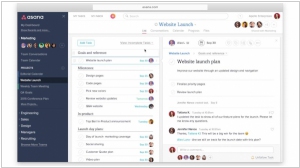
Asana, the renowned productivity and collaboration service, has secured a significant $75 million investment in its Series D funding round. In a blog post, Asana highlighted that 45 percent of its 30,000 paying customers are located outside of the United States. Among its notable clientele are prominent names like Tesco, Sky, Danone, Chanel, and Spotify. With this global reach in mind, Asana has announced its plans to introduce Spanish, Portuguese, and Japanese versions of its service, following the recent rollout of support for French and German. Including this latest funding, Asana has now successfully raised a total of $168 million from investors. Business Insider reported that the startup's current valuation stands at an impressive $900 million.
2016. Asana added Custom fields
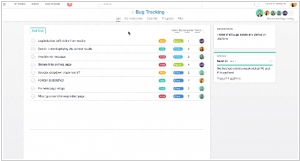
Task management app Asana is introducing a new feature called custom fields, which allows users to customize the information management system within Asana to accommodate various structured data points. With custom fields, companies can tailor Asana to their specific needs. For instance, a company conducting a recruitment drive can create a form within Asana to track additional details about candidates. Marketing teams can delve into larger plans and monitor specific campaigns, while engineering teams can utilize custom fields for bug tracking. Design teams can leverage this feature to provide more comprehensive insights and updates on major projects. Furthermore, Asana will integrate custom fields into its API, enabling users to explore new applications and utilize Asana as a customer-facing tool to efficiently gather and structure information in real time.
2016. Project management app Asana raised $50M
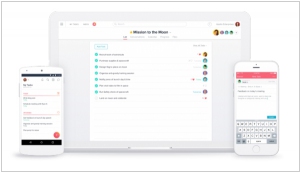
Asana, an application designed for team project tracking, has reached a valuation of $600 million with the support of YC's Sam Altman. As of today, Asana has garnered 13,000 paying businesses as customers, with over 140,000 businesses utilizing the product overall. This user base continues to grow by approximately 10,000 businesses each month. Asana offers both free and premium tiers, with the latter priced at $8.33 per member per month for groups larger than 15, granting access to additional features. With the increasing transition of business operations to online platforms, productivity applications are currently in high demand. Recently, BetterWorks, a similar platform for task and goal management, secured $20 million in Series B funding. Apart from BetterWorks and Asana, there are other productivity-boosting tools available such as Basecamp, Wrike, and Trello, all catering to the needs of organizing and enhancing the productivity of knowledge workers.

